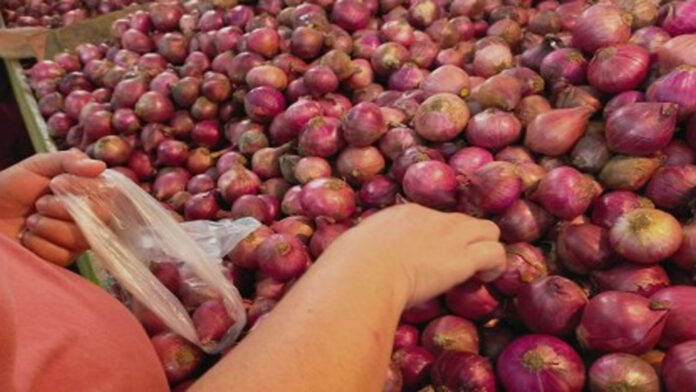To bring down the retail prices of onion, the Department of Agriculture on Saturday said it is focusing on eliminating the many layers of traders that trigger the high cost of commodities.
“Right now, what we are doing is to eliminate certain layers of traders because that will help bring down the price. As we all know, retail price includes the cost of biyahero (trader) and the cost of the retailer,” said Agriculture Assistant Secretary and spokesperson Kristine Evangelista during a news forum at Dapo Restobar in Quezon City.
“At the same time, we are trying to link our farmers directly to the retailers and the markets. Pag mas mura ng kuha ng mga retailers, mas mura ang presyo sa palengke (If the retailers get produce at a cheaper price, the prices in the market will also be cheaper),” she said.
The DA official announced the retail prices of onion in wet markets remain relatively high at PHP400–PHP 550 per kilo.
Besides strengthening the market linkage between the producers and the consumers, Evangelista added that the DA is also looking if there are other bottlenecks in the supply chain, and likewise capacitating farmers’ cooperatives to take on the role of the middlemen.
“Definitely, this is a direction that we will continue to make. We will minimize middlemen in the transactions to be able to be fair to our primary stakeholders, which is the producers, and also protect the consumers as well,” Evangelista said.
Regarding the importation of onions, she said the DA is ensuring the imported products will not affect local farmers.
“If you have noticed, there is a cutoff period for the importation, unlike before. So there are certain parameters that are in place to be able to safeguard also the harvest of local onion farmers,” she said.
This week, the DA approved the importation of 21,060 metric tons of onions, and set a Jan. 27 deadline for all eligible importers for their shipments to arrive.
The importation of onion is meant to arrest the price surges of the commodity in the local markets ahead of the peak of harvest season expected by mid-February.
Local onion growers are expecting to harvest by February and until April.
For long-term measures, Evangelista said the DA will be implementing interventions to bring down the cost of production and at the same time increase the yield.
She said they are also looking at possible sites for the location of cold-storage facilities that the DA will establish to store surplus produce.
“The Bureau of Plant Industry has a list of accredited cold-storage facilities, but we need to put up additional facilities. That is included in the DA budget this year. These facilities are meant to be strategically-located in production areas,” Evangelista said.
“As far as the Department of Agriculture is concerned, our direction is clear, which is to increase production, and bring down the cost of production. On the other side of it is to make agricultural commodities accessible and affordable to consumers,” she said. (PNA)


